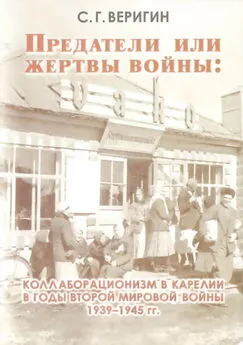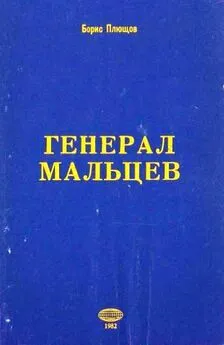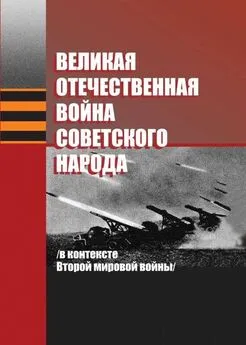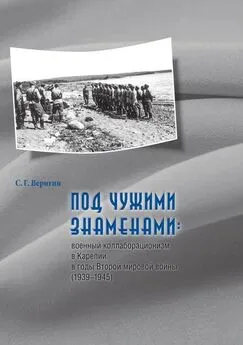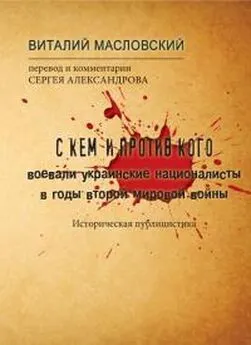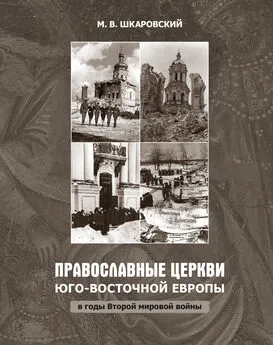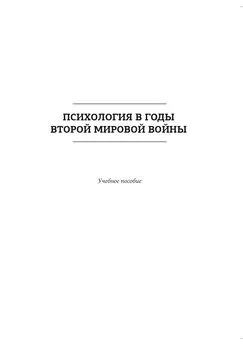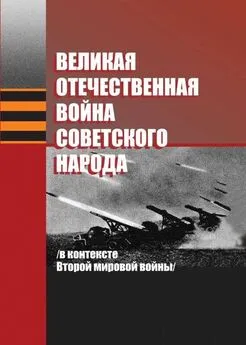Сергей Веригин - Предатели или жертвы войны: коллаборационизм в Карелии в годы Второй мировой войны 1939-1945 гг.
- Название:Предатели или жертвы войны: коллаборационизм в Карелии в годы Второй мировой войны 1939-1945 гг.
- Автор:
- Жанр:
- Издательство:ПерГУ
- Год:2012
- Город:Петрозаводск
- ISBN:978-5-8021-1367-7
- Рейтинг:
- Избранное:Добавить в избранное
-
Отзывы:
-
Ваша оценка:
Сергей Веригин - Предатели или жертвы войны: коллаборационизм в Карелии в годы Второй мировой войны 1939-1945 гг. краткое содержание
Книга подготовлена на базе широкого круга источников, основу которого составили архивные документы из фондов государственных и ведомственных архивов России и Финляндии. Многие архивные документы впервые вводятся в научный оборот.
Предатели или жертвы войны: коллаборационизм в Карелии в годы Второй мировой войны 1939-1945 гг. - читать онлайн бесплатно полную версию (весь текст целиком)
Интервал:
Закладка:
V. I. Boyarsky in the foregoing monograph said that after several years of the occupation 20 % from 90 % of patriots would join the Resistance movement and would actively fight against the enemy. About 70 % would take up passive and waiting position [511] Boyarsky V. I. Partizany i armiya: Istoriya uteryannyh vozmozhnostei (Partisans and army: the history of lost opportunities). Р. 4–5.
. Examination of the numerous of documentary, and primarily archival sources, which were previously secret and only recently became availaЫe to researches shows that these numbers also generally correspond to Karelia. The majority of population caught in the occupation zone didn't cooperate with occupants, but took up passive position aiming primarily at surviving in the extreme conditions of the war. And it concerned party officials as well as ordinary civilians. So, from July 1944 to Мау 1945 the Central Committee of the All-Union Communist Party of the Karelian-Finnish SSR repeatedly considered the cases about communists left on the occupied territory. The decisions of the issues emphasized that many of communists in the occupied regions hid or destroyed their party membership cards, worked in their personal farms. They didn't have active position in the struggle against occupants, didn't cooperate with partisans and undergrounders, which worked as elders. Such communists were excluded from the party with formulation "for passing behavior" [512] RGSPI. F. 17. Ор. 45. D. 765. L. 20.
.
Generally the major part of local people in spite of massive nationalistic propaganda remained loyal to their motherland and didn't want to move to alien country especially to one that was on the edge of military defeat. It should Ье taken into consideration that many people of the occupied Ьу Finns regions of Karelia waited for their fathers, husbands, brothers and sons fought in the Red Army.
However for some part of the Soviet population caught in the occupation zone, evacuation to Finland was inevitaЫe: for those who served for Finnish occupation authorities and were afraid of arraignment for treason; women married Finnish men and men gone to related battalions.
The analysis of the documentary materials shows that the national policy of Finnish occupation regime in Karelia in 1941–1944 aimed at division of population Ьу nationality {Finno-Ugrians and Russians) didn't bring expected results — Soviet Karelians, Veps, Finns failed to Ье brought to the Finnish side. Moreover, those who were to liberate from "Russian slavery'; defended independence of their country with arms in their hands along with Russians and other peoples of the Soviet Union.
In the Soviet Union people who collaborated with Finnish occupation regime or fought as а part of Finnish troops against the Red Army and who stayed on the territory of the USSR after the war were regarded as traitors of the Motherland for а long time and were forgotten. For many years there was staЫe negative attitude to the population which unwillingly was caught in the Finnish occupation. The rejection was shown primarily Ьу the Soviet and economic bodies. It is proved Ьу many memories of the people who survived through the occupation. For example, а resident of village Sheltozero Taisiya Maksimova answered to the question "How did Soviet authorities and people who returned from evacuation behave towards you after all?": "The authority didn't say anything but we were so tortured on timber stockpiling! Especially those who were occupied! Sometimes they didn't рау us money, only said something unclear, and we didn't have normal living conditions". In Paisky timber industry enterprise people lived in cold buildings, and one more thing that they did — the card was 600 g (bread), but they took off 200 g. They punished us only for that we were in the occupation. In different ways…" [513] Ustanya istoriya v Karelii (Oral history in Karela), Issue 3, Finnskaya okkupatsiya v Karelii (1941–1944). (The Finnish occupation in Karelia (1941–1944). Petrozavodsk, 2007. Р. 80.
.
The situation changed а little after the collapse of the USSR. In present times for а majority of new democratic Russia people who cooperated with the occupational authorities are collaborationists and remain traitors of their nation who took the side of the enemy in the difficult times of their country.
The proЫem of collaborationism in Karelia and Finland during World War II was not availaЫe for scientists for а long time for ideological reasons and only now becomes the object of academic interest of Russian historians. Many issues have to Ье studied: clarification of the exact number of Soviet people collaborated with Finnish occupational authorities during World War ll, determination of the reasons and social base of it. In the analysis of the issue some more points should Ье specified: how adequate were the repressions of the Finnish authorities to the people who cooperated with Soviet state and military bodies during the Winter War and how adequate were the repressions of the Soviet authorities in 1941–1944 to those who were considered as collaborationists: primarily to f ormer prisoners of war and repatriates who lived and worked on the occupied Karelian territory and then removed to Finland.
But nowadays based on the analysis of wide range of documentary material about the cooperation of the local population of Karelia and Finland with the occupational authorities during World War II we can answer the main question raised in the introduction: who were collaborationists — traitors of their countries or victims of the war. From our point of view it is impossiЬle to justify military collaboration. Those of Finnish and Soviet people who took the side of the enemy and fought against their motherland with arms in their hands can Ье reasonaЫy considered as traitors. However there were few ideological fighters among them, most of collaborationists took the side of the enemy saving their lives and lives of their families or under the kourbash.
The behavior of those Soviet and Finnish people who cooperated with the occupational authorities in the sphere of economic and cultural activities during the war time at least can Ье understood if not justified. The majority of them occurred on the occupied territory unwillingly because of the harsh military environment and often due to the fault and sluggishness of their authorities and administration who did not manage to evacuate the population of the first war period in time and in an orderly way. Especially it concerns the issues of the evacuation of civilian Finnish population during the Winter War of 1939–1940 and Soviet people in the first period of the Great Patriotic War. They can reasonaЫy Ье concerned as victims of the war. For many years after the end of the war "the imprint of the occupation and the exile" laid on both of them.
Список источников и литературы
Архив Президента Российской Федерации (АПРФ), Москва:
Ф. 3 — Политбюро ЦК ВКП(б).
Российский государственный военный архив (РГВА), Москва:
Ф. 25888 — Ленинградский военный округ.
Ф. 31921– Управление 1-го стрелкового корпуса ФНА.
Ф. 34980 — Коллекция документов советско-финляндской войны 1939–1940 гг.
Российский государственный архив социально-политической истории (РГАСПИ), Москва:
Ф. 17 — Фонд ЦК ВКП(б).
Ф. 77 — Коллекция документов А. А. Жданова.
Ф. 82 — Коллекция документов В. М. Молотова.
Ф. 516 — Финляндская коммунистическая партия.
Ф. 522 — Коллекция документов О. В. Куусинена.
Государственный архив Российской Федерации (ГАРФ), Москва:
Ф. Р-1318 — Наркомат по делам национальностей РСФСР.
Ф. 5283 — Всесоюзное общество культурных связей с заграницей (ВОСК).
Ф. 9526 — Управление уполномоченного СНК СССР — Совета Министров СССР по делам репатриации, 1944–1953.
Центр хранения историко-документальных коллекций (ЦХИДК), Москва:
Ф. 1e — Главное управление по делам военнопленных и интернированных (ГУПВИ).
Центральный государственный архив исторической и политической документации (ЦГАИПД), С.-Петербурr:
Ф. 24 — Областной комитет ВКП(б).
Ф. 25 — Городской комитет ВКП(б).
Национальный архив Республики Карелия (НА РК), Петрозаводск:
Ф. 3– Карельский обком ВКП(б).
Ф. 8 — ЦК КП(б) КФССР.
Ф. 213 — Штаб партизанского движения на Карельском фронте.
Ф. 287 — Трофейные документальные материалы.
Ф. 690 — СНК КАССР.
Ф. 804 — Военное управление Восточной Карелии.
Ф. 1394 — СНК КФССР.
Ф. 1411 — Статистическое управление КФССР.
Ф. 3435 — Фонд Г. Н. Куприянова. Рукописи:
• «Война на Севере»;
• «Восстановление народного хозяйства Карелии в 1944–1945 гг.»;
• «Годы и люди»;
• «Народное хозяйство республики после окончания войны»;
• «Перед войной»;
• «После изгнания врага».
Архив Министерства внутренних дел Республики Карелия (АМВД РК), Петрозаводск:
Особые папки. Д. 1, 1/1, 2. Т. 1 и 2.
Архив Управления Федеральной службы безопасности Российской Федерации по Республике Карелия (АУФСБ РФ по РК), Петрозаводск:
ЛД 1, 2, 10, 12, 21, 22, 23, 24, 25, 35 (Литерные дела).
Ф. КРО (Фонд контрразведывательного отдела).
ФДОУ (Фонд дел оперативного учета).
ФЛД (Фонд литерных дел), арх. № 1 — Штаб партизанского движения
Карельского фронта.
ФОД (Фонд общего делопроизводства).
ФПД (Фонд прекращенных дел).
ФРД (Фонд распорядительных документов).
ФСДП (Фонд секретного делопроизводства).
ФТДМ (Фонд трофейных документальных материалов).
ФУД (Фонд уголовных дел).
Военный архив (Sota arkisto, SA), Хельсинки:
Читать дальшеИнтервал:
Закладка:
